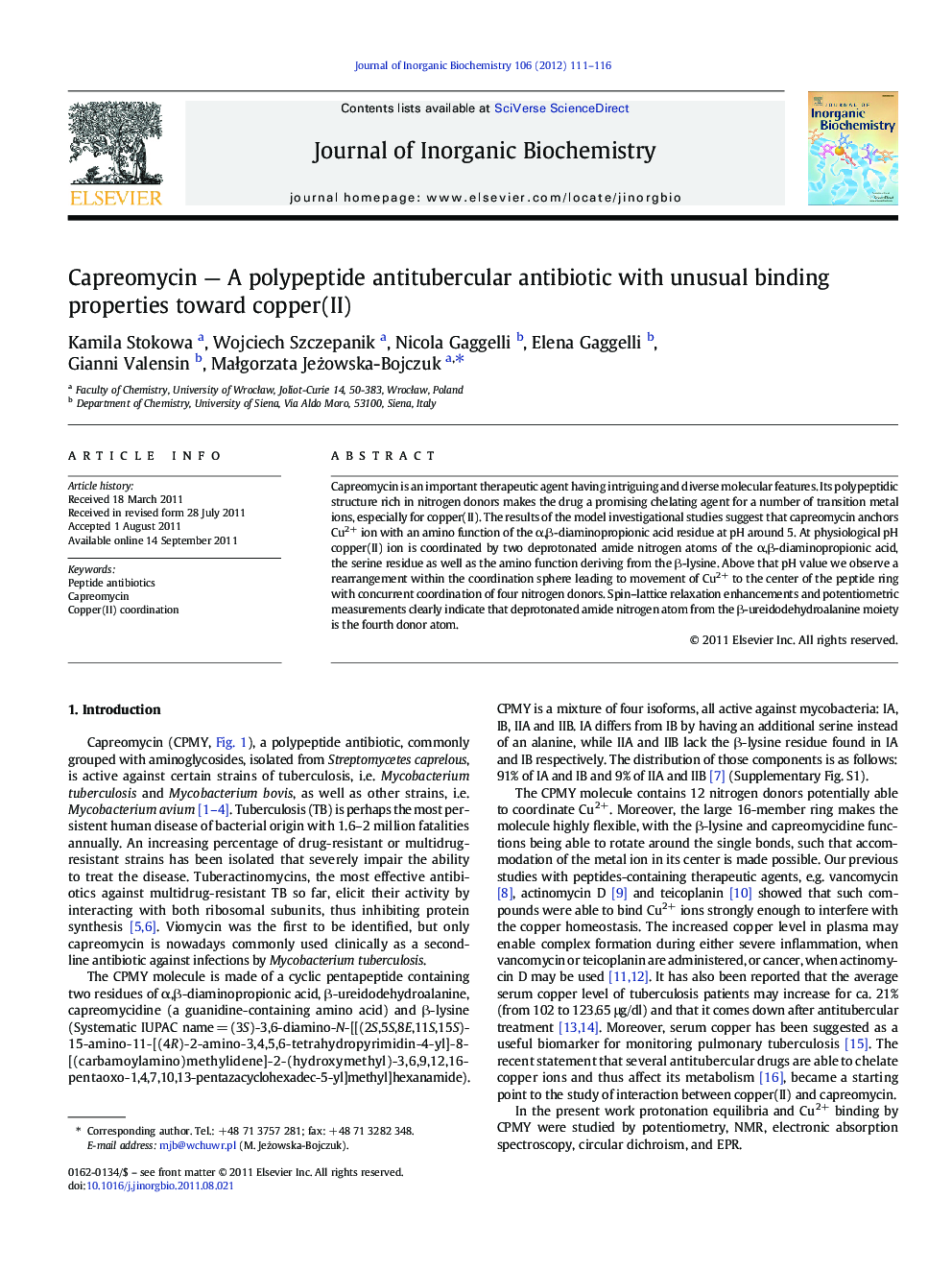| Article ID | Journal | Published Year | Pages | File Type |
|---|---|---|---|---|
| 1317858 | Journal of Inorganic Biochemistry | 2012 | 6 Pages |
Capreomycin is an important therapeutic agent having intriguing and diverse molecular features. Its polypeptidic structure rich in nitrogen donors makes the drug a promising chelating agent for a number of transition metal ions, especially for copper(II). The results of the model investigational studies suggest that capreomycin anchors Cu2+ ion with an amino function of the α,β-diaminopropionic acid residue at pH around 5. At physiological pH copper(II) ion is coordinated by two deprotonated amide nitrogen atoms of the α,β-diaminopropionic acid, the serine residue as well as the amino function deriving from the β-lysine. Above that pH value we observe a rearrangement within the coordination sphere leading to movement of Cu2+ to the center of the peptide ring with concurrent coordination of four nitrogen donors. Spin–lattice relaxation enhancements and potentiometric measurements clearly indicate that deprotonated amide nitrogen atom from the β-ureidodehydroalanine moiety is the fourth donor atom.
Graphical abstractCapreomycin, a polypeptide antibiotic is active against certain strains of tuberculosis. It is able to bind Cu2+ in the center of the cyclic polypeptide ring tightly. High stability of the complex suggests its potential occurring in physiological conditions.Figure optionsDownload full-size imageDownload as PowerPoint slide
